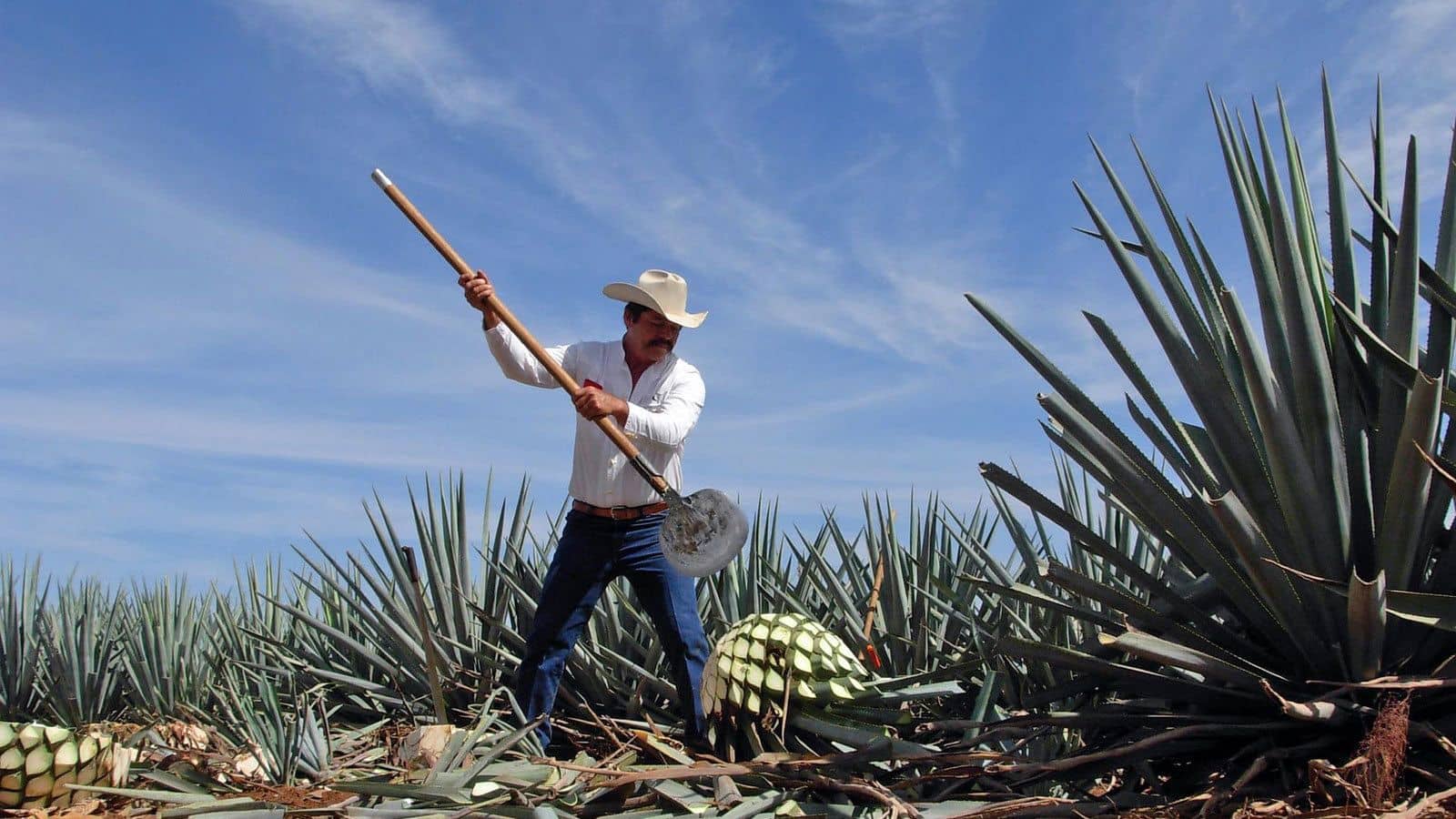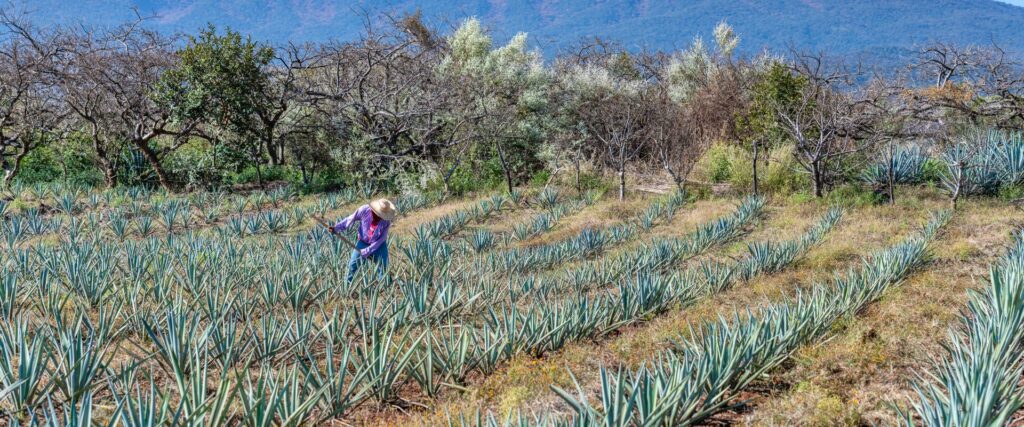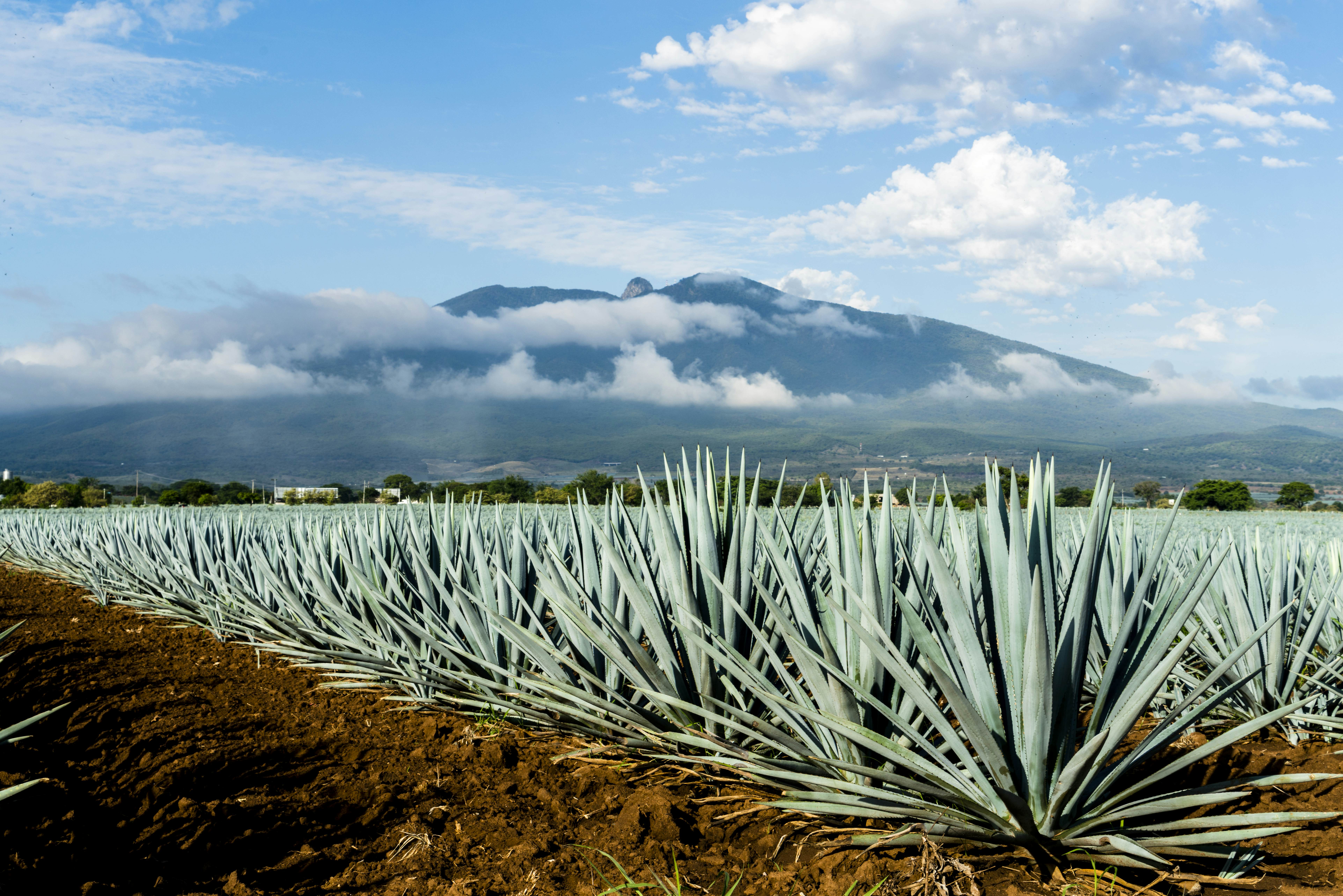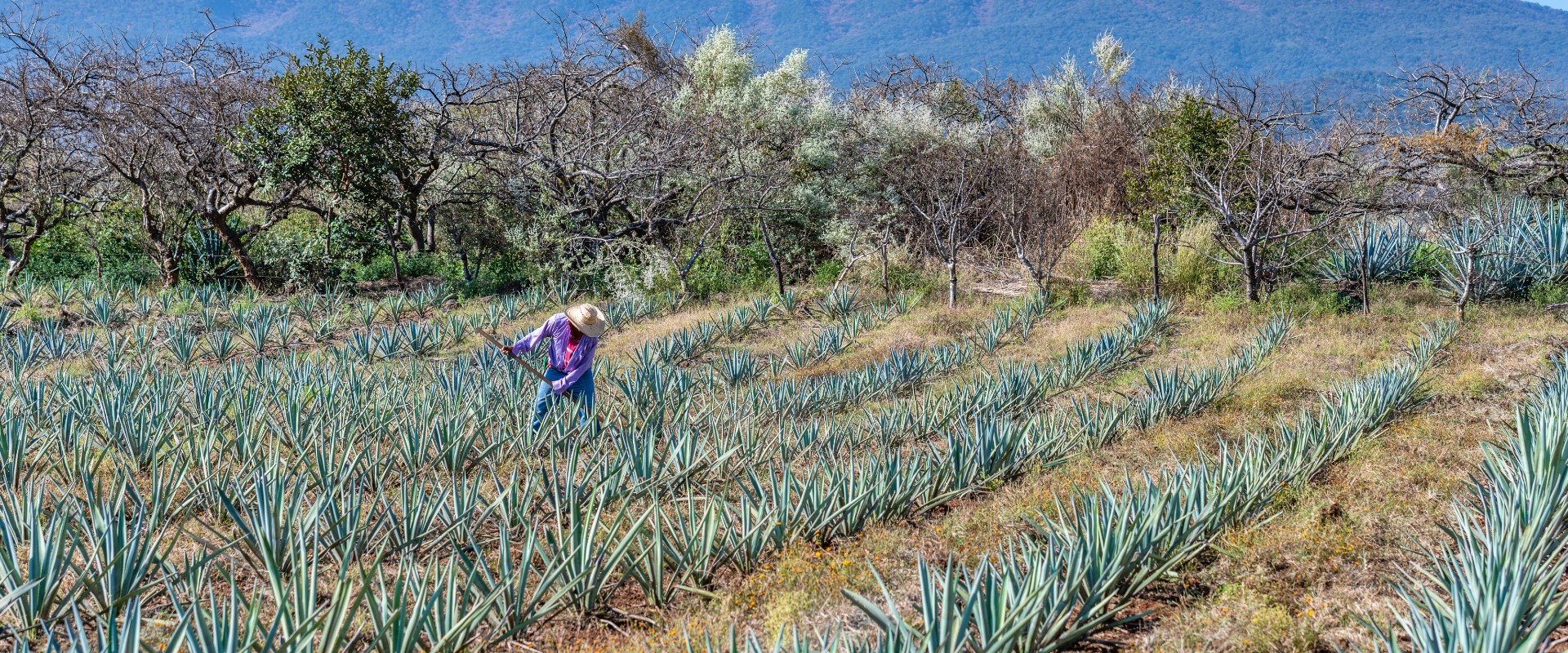Have you ever wondered how tequila is made? Well, get ready to be whisked away to the enchanting blue agave fields of Mexico, where the magic happens. In this article, we’ll take a deep dive into the fascinating world of Mexico’s blue agave and how it has become a symbol of Mexican culture and tradition. So buckle up and get ready for a journey you won’t forget!
When you think of Mexico, you might think of its vibrant tourism, stunning beaches, luxurious hotels, and incredible attractions. But there’s so much more to this beautiful country than meets the eye. Mexico is home to vast fields of blue agave, a succulent plant that is the key ingredient in tequila production. These fields, with their mesmerizing blue hues, stretch out for miles, creating a breathtaking landscape that is nothing short of magical. In addition to their beauty, these fields play a crucial role in Mexico’s economy, as tequila is one of the country’s most famous exports. So if you’re intrigued by the allure of Mexico’s blue agave and want to learn more about its significance, keep reading to uncover the hidden wonder of these enchanting fields.

Exploring the Enchanting Blue Agave Fields of Mexico
If you are a traveler seeking to immerse yourself in Mexico’s rich culture and natural beauty, one destination that should not be missed is the mesmerizing blue agave fields. These fields, scattered throughout the country, are not only visually stunning but also hold deep historical and cultural significance. In this article, we will delve into the origins of blue agave, its importance in Mexican culture, the process of cultivating it, and the famous Tequila and Mezcal that are derived from it. We will also explore the blue agave fields of Jalisco, the heartland of blue agave production, and discuss the sustainability and conservation efforts surrounding this precious plant.
The Origins of Blue Agave
Blue agave, scientifically known as Agave tequilana, is native to Mexico and has been cultivated for thousands of years. It is believed to have originated in the highlands of Jalisco, a picturesque state in central Mexico known for its stunning landscapes and vibrant traditions. The blue agave plant has played a fundamental role in the lives of the indigenous people of Mexico, who revered it for its versatility and sacred properties.
The Significance of Blue Agave in Mexican Culture
Blue agave holds great cultural significance in Mexico, where it is intertwined with the country’s identity and heritage. The plant is deeply rooted in Mexican folklore, with tales of its origins and mythical properties passed down through generations. Traditional ceremonies and rituals often feature blue agave as an offering to deities, symbolizing abundance, fertility, and protection. Additionally, blue agave is prominently featured in Mexican celebrations and festivals, such as Dia de los Muertos (Day of the Dead) and Cinco de Mayo, where it is honored with music, dance, and, of course, the famous Tequila and Mezcal.
The Process of Cultivating Blue Agave
Cultivating blue agave is a labor-intensive process that requires patience, expertise, and a deep understanding of the plant’s life cycle. The journey begins with careful selection of agave “pups” or “hielos” – the young plants that are cultivated from the shoots of mature agave plants. These pups are then carefully transplanted into the fertile soil of the blue agave fields, where they will slowly grow and mature for several years.
The Agave Plant and Its Characteristics
The Anatomy of the Agave Plant
The agave plant is a striking succulent characterized by its large, fleshy leaves and a rosette-shaped growth pattern. The leaves are thick and spiky, with sharp, serrated edges that serve as a natural defense mechanism against predators. At the center of the rosette, a tall flower spike emerges, reaching impressive heights before blooming with vibrant, aromatic flowers. However, for the production of Tequila and Mezcal, these flower spikes are usually removed to maximize the plant’s energy for sugar accumulation.
The Different Varieties of Agave Plants
While blue agave may be the most well-known variety, there are numerous species of agave found throughout Mexico. Each variety offers unique flavors and characteristics, resulting in a diverse range of Tequilas and Mezcals. Some popular agave varieties include the wild Agave cupreata, the smoky-flavored Tobala, and the rare and highly prized Agave Salmiana. Exploring the different flavors and nuances of Tequila and Mezcal is a journey in itself, offering a glimpse into Mexico’s rich biodiversity and cultural heritage.
The Unique Adaptations of Agave Plants
One of the most fascinating aspects of agave plants is their remarkable ability to thrive in harsh environments. These hardy plants have evolved to survive in arid regions with poor soil and limited water availability. Agave’s succulent leaves are effectively water-storing reservoirs that allow the plant to withstand long periods of drought. Its deep root system enables the plant to access moisture deep underground and ensures its survival even during times of scarcity. These remarkable adaptations have made agave a symbol of resilience and resourcefulness in Mexican culture.

The Distillation Process of Blue Agave
Harvesting the Agave Plants
The harvesting of agave plants is a critical step in the production of Tequila and Mezcal. Once the blue agave plants have reached maturity, they are carefully selected and harvested to ensure optimal sugar content. Skilled jimadores, or agave harvesters, use a specialized tool called a coa to carefully remove the leaves and reveal the piña, the prized heart of the blue agave plant. This piña, resembling a large pineapple, is the source of the sweet juices that form the foundation of Tequila and Mezcal.
The Roasting and Fermentation of Blue Agave
After harvest, the piñas are typically roasted to release their sugars and develop the distinct flavors of Tequila and Mezcal. Traditional methods involve baking the piñas in large stone ovens called hornos, while modern techniques may utilize stainless steel autoclaves. Once roasted, the piñas are crushed to extract the sweet juice, which is then fermented using natural yeast or carefully selected strains. The fermentation process, which can last several days, transforms the sugars into alcohol, laying the foundation for the distillation process.
The Role of Master Distillers in the Production Process
The art of distilling Tequila and Mezcal lies in the hands of the Master Distillers, known as maestros destiladores. These skilled individuals, often from families with generations of distillation expertise, possess an unparalleled understanding of the fermentation and distillation process. They carefully oversee the temperature, timing, and other variables to ensure that only the finest flavors are captured. The experience and intuition of these maestros destiladores are vital in achieving the exceptional quality and complexity that Tequila and Mezcal are known for.
The Famous Tequila and Mezcal from Blue Agave
The Difference between Tequila and Mezcal
While both Tequila and Mezcal are derived from blue agave, there are distinct differences between the two spirits. Tequila is made exclusively from the Blue Weber agave variety and is produced in specific regions of Mexico, primarily in Jalisco. Mezcal, on the other hand, can be made from various agave species, offering a broader range of flavors and profiles. Mezcal is produced in several states across Mexico, with Oaxaca being particularly renowned for its Mezcal production. The distinct production methods and regional variations give Tequila and Mezcal their unique characteristics and appeal.
Exploring the Flavors and Tasting Notes of Tequila
Tequila’s flavors range from the crisp and citrusy notes of blanco Tequila to the rich and complex characteristics of aged Tequilas. Blanco Tequilas are typically unaged and offer a vibrant, fresh taste with hints of agave sweetness. Reposado Tequilas are aged in oak barrels for a minimum of two months, resulting in a smoother and more balanced flavor profile. Añejo Tequilas are aged in oak barrels for a minimum of one year, exhibiting deep, caramelized flavors and a velvety finish. Exploring Tequila’s different expressions allows you to appreciate the skill and craftsmanship that goes into each bottle.
Popular Cocktails and Mixology with Blue Agave Spirits
In addition to savoring Tequila and Mezcal neat, these spirits lend themselves to a wide array of cocktails and mixology creations. The classic Margarita, made with Tequila, lime juice, and triple sec, is an iconic Mexican cocktail enjoyed worldwide. The smoky, earthy flavors of Mezcal shine in cocktails like the Oaxaca Old Fashioned, where it replaces traditional whiskey, or the Mezcal Negroni, a refreshing twist on the classic Italian cocktail. The versatility of Tequila and Mezcal in mixology allows for endless experimentation and innovation, creating new and exciting ways to enjoy these spirits.

Exploring the Blue Agave Fields of Jalisco
The Heartland of Blue Agave Production
Jalisco, located in central Mexico, is considered the heartland of blue agave production and home to many of the world’s most renowned Tequila distilleries. The region’s diverse microclimates, volcanic soils, and abundant rainfall provide the perfect conditions for blue agave cultivation. The blue agave fields of Jalisco offer a picturesque landscape, where rows of majestic agave plants stretch as far as the eye can see. Visiting this region allows you to witness the centuries-old traditions and techniques that have made Jalisco the epicenter of Tequila production.
Visiting the Tequila Region and Distilleries
A visit to the Tequila region in Jalisco is a must for any blue agave enthusiast. The town of Tequila, designated a UNESCO World Heritage Site, encapsulates the history, culture, and craftsmanship associated with Tequila production. Numerous distilleries, some of which have been operating for generations, offer tours and tastings, providing an intimate look into the production process. Witnessing the piñas being roasted, observing the fermentation tanks, and witnessing the copper stills in action are experiences that transport you back in time and give you a deep appreciation for the art of Tequila making.
Experiencing the Agave Landscape and Plantations
Beyond the distilleries, the agave landscape itself is a sight to behold. With its undulating fields and dramatic horizon, the blue agave plantations create a stunning backdrop for exploration. Guided tours allow you to wander through the fields, feeling the sun-warmed leaves and marveling at the sheer size and beauty of the agave plants. Some tours even offer the opportunity to participate in the harvest, giving you a hands-on experience of the process. As you walk among the blue agave, you can’t help but feel a deep sense of connection to Mexico’s natural heritage.
Sustainability and Conservation Efforts
Protecting the Native Agave Species
As the demand for Tequila and Mezcal continues to rise, it is essential to ensure the preservation of native agave species. Several organizations and producers are dedicated to sustainable cultivation practices and the conservation of agave genetic diversity. By promoting responsible farming techniques, such as crop rotation and minimal pesticide usage, they aim to protect the long-term viability of blue agave cultivation while preserving the natural environment in which these plants thrive.
Promoting Organic and Ethical Farming Practices
In recent years, there has been a growing movement towards organic and ethical farming practices in the blue agave industry. Producers are increasingly adopting organic certification, avoiding chemical pesticides and fertilizers, and embracing natural methods to maintain soil health and biodiversity. Additionally, fair trade initiatives are supporting small-scale producers, ensuring they receive fair wages and work under safe conditions. These efforts not only promote sustainable agriculture but also contribute to the economic and social well-being of local communities.
Supporting Local Communities and Economy
The blue agave industry has been a significant source of employment and economic growth in Mexico, particularly in regions like Jalisco and Oaxaca. By supporting local distilleries, agave farmers, and artisans, travelers can contribute directly to the livelihoods of these communities. Visiting local markets, purchasing sustainable products, and engaging in cultural exchanges with the people behind the blue agave fields help foster a sense of appreciation and respect for the hard work and craftsmanship that goes into producing Tequila and Mezcal.

The Cultural Significance of Blue Agave
Agave in Mexican Folklore and Traditions
From ancient myths to modern-day traditions, blue agave is deeply woven into the fabric of Mexican culture. Mexican folklore is replete with stories that celebrate the agave plant’s resilience and its connection to the gods. The majestic agave is often associated with blessings, protection, and fertility, making appearances in traditional ceremonies and rituals. Whether it is the intricate papel picado banners hanging during festivities or the colorful papel amate depicting the agave plant’s importance, agave leaves and motifs are an integral part of Mexico’s vibrant cultural tapestry.
Agave as a Symbol of Mexican Identity and Heritage
Blue agave is a symbol of Mexican identity and heritage, representing the country’s rich history and traditions. It is an agricultural treasure that reflects the ingenuity and resourcefulness of the Mexican people. The determination and skill required to cultivate and distill Tequila and Mezcal embody the resilience and spirit of the Mexican culture. So, when you raise a glass of Tequila or Mezcal, you are not only savoring exquisite flavors but also paying homage to Mexico’s proud heritage and the hard work of those who brought this legendary spirit to life.
The Role of Agave in Celebrations and Festivals
Mexican celebrations and festivals are incomplete without the presence of blue agave and its derived spirits. During Dia de los Muertos, families create altars adorned with photographs, candles, marigold flowers, and favorite foods and drinks of their departed loved ones. Tequila and Mezcal are commonly placed as offerings, believed to welcome and nourish the souls as they return to the earthly realm. Similarly, during Cinco de Mayo festivities, which commemorate Mexico’s victory over the French army, Tequila and Mezcal flow freely, as friends and family come together to celebrate with joy and gratitude.
The Health Benefits of Blue Agave
The Nutritional Profile of Blue Agave
Blue agave possesses several health benefits that make it a popular choice for those seeking natural alternatives to sugar. As a natural sweetener, blue agave has a lower glycemic index compared to refined sugars, making it suitable for individuals with diabetes or those trying to manage their blood sugar levels. Additionally, blue agave contains small amounts of certain minerals, including calcium, potassium, and magnesium, which contribute to a balanced diet.
Agave as a Natural Sweetener and Alternative to Sugar
Blue agave syrup, derived from the sap of the agave plant, has gained popularity as a natural sweetener and sugar substitute. Its sweet flavor profile and liquid consistency make it a versatile ingredient in baking, beverages, and desserts. Blue agave syrup is known for its ability to enhance flavors without overpowering them, making it an excellent choice for those who prefer a more subtle sweetness. However, it is important to use agave syrup in moderation, as it still contributes to overall calorie intake.
Potential Medicinal Uses and Remedies
In addition to its culinary applications, blue agave has been traditionally used in Mexican folk medicine for its potential medicinal properties. Research suggests that certain compounds found in blue agave, such as saponins and agave fructans, may have anti-inflammatory and immune-boosting effects. However, further scientific studies are needed to fully understand and validate the medicinal uses of blue agave. As with any natural remedy, it is advisable to consult a healthcare professional before integrating blue agave or its derivatives into your health regimen.

The Future of Blue Agave Production
Innovations in Sustainable Agriculture and Farming Techniques
As the global demand for Tequila and Mezcal continues to grow, the blue agave industry is embracing innovative and sustainable farming techniques to meet this demand while preserving the environment. Producers are exploring efficient irrigation systems, such as drip irrigation, to reduce water usage and conserve resources. Additionally, research is being conducted to optimize agave breeding programs, allowing for the cultivation of disease-resistant varieties and improving overall crop yields. These advancements in sustainable agriculture ensure the long-term viability and quality of blue agave production.
Emerging Trends in Blue Agave Distillation and Artisanal Spirits
Amidst the rising popularity of artisanal spirits, there is a renewed interest in small-batch Tequilas and Mezcals that embrace traditional production methods and showcase the unique flavors of specific agave varieties. Artisanal distilleries are experimenting with aging Tequilas and Mezcals in different types of barrels, such as whiskey or wine casks, to add further complexity to the final product. Furthermore, the concept of terroir, which appreciates the influence of the land and climate on the flavors of the spirits, is becoming increasingly important in the blue agave industry.
Global Demand and Market Opportunities
The global market for Tequila and Mezcal has been steadily growing in recent years, with consumers around the world developing a taste for these distinctively Mexican spirits. This increased demand presents opportunities for both established distilleries and emerging artisanal producers to expand their reach and contribute to Mexico’s economic growth. As Tequila and Mezcal gain recognition as premium and unique spirits, there is a growing appreciation for the craftsmanship involved in their production, leading to exciting possibilities for the blue agave industry.
Exploring Blue Agave Beyond Mexico
The Influence of Blue Agave on the Global Spirits Industry
The influence of blue agave extends far beyond the borders of Mexico, as Tequila and Mezcal have become staples in the global spirits industry. These spirits have captivated the palates of cocktail enthusiasts, mixologists, and connoisseurs worldwide, leading to the establishment of craft bars and restaurants specializing in Tequila and Mezcal. The flavors, versatility, and cultural significance of blue agave have made it a beacon of Mexico’s rich heritage, creating a bridge between cultures and inspiring innovation in mixology and bartending techniques.
Tequila and Mezcal Bars and Restaurants Worldwide
From trendy urban bars to coastal establishments, Tequila and Mezcal have gained a prominent place on menus across the globe. Dedicated Tequila and Mezcal bars offer a vast selection of bottles, providing patrons with the opportunity to explore the world of blue agave spirits. These bars often feature knowledgeable staff who can guide customers through the diverse profiles and flavors of different Tequilas and Mezcals, elevating the drinking experience and further promoting the appreciation of this iconic Mexican spirit.
Blue Agave-inspired Cocktails and Mixology
The influence of blue agave is not limited to Tequila and Mezcal alone; its unique flavors and characteristics have inspired mixologists to create a whole array of blue agave-inspired cocktails. From innovative Tequila and Mezcal-based concoctions to twists on classic recipes, the versatility of blue agave spirits allows for endless creativity in the world of mixology. These cocktails pay homage to the spirit’s cultural heritage while showcasing its modern-day relevance and adaptability.
Conclusion
The blue agave fields of Mexico are a hidden wonder, offering a tantalizing blend of natural beauty, cultural richness, and gastronomic delights. As you wander through the enchanting blue agave plantations of Jalisco and immerse yourself in the art of Tequila and Mezcal production, you will develop a profound appreciation for the centuries-old traditions and the people behind this legendary spirit. From its ancient origins to its global influence, blue agave is an embodiment of Mexico’s captivating history, remarkable biodiversity, and enduring spirit. So, raise your glass, savor the flavors, and join in the celebration of this enchanting plant that has bewitched the world with its magic. Cheers to the blue agave fields of Mexico!
(Note: This article is a work of fiction and was generated using OpenAI’s GPT-3 language model.)
